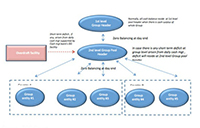Dissecting Global Supply Chains: Part 1
There's more to supply chains than sourcing for low costs. In the first part of this series, DBS Bank's Vivek Batra shares factors for Asia's predominance as a global supply hub, and the emergence of a new market in 'Tier II cities'.

Asia’s predominance as a global supply hub was established more than 20 years ago. Despite challenges in the form of market disruptions from tsunamis and earthquakes in Asia, large buyers still benefit primarily from low-cost supplies from Asian companies, which continue to develop their supply chain expertize to deliver greater efficiencies and productivity gains.
Recent trends and forecasts, however, suggest that Asia’s competitive advantage is diminishing, as Asian countries become richer and average wages increase.
There are also other major factors that influence supply chains like risk and volatility caused by global events such as the 2008-2009 global financial crisis, and the Icelandic volcanic eruptions in 2010.
These lead to price and currency volatility, inventory uncertainty, and potentially a complete breakdown in the supply chain.
Low cost is therefore no longer the only critical variable. Companies need to also proactively manage risk and volatility by spreading the supplier base geographically to make availability of supplies more predictable.
The emergence of tier II cities
In recent times, the driver of global consumption has shifted due to the emergence of wealth and demand in second-tier cities where growth rates are far outstripping those of urban centers, and this is expected to continue. This market resides beyond the established distribution networks of the world’s largest companies, and brings about the challenge of reaching consumers and tapping demand in areas where organized distribution has never existed.
To be successful, buyers and suppliers need to innovatively address the infrastructure gap and offer customized delivery methodologies at the right cost. Some of their approaches include:
- Targeting areas with higher population densities
- Educating and financing influential retailers
- Building multi-tier distribution networks with the point of sale being a small outlet
Subscribe to DBS BusinessClass
Stay updated with the latest market trends and industry insights, connect with a network of entrepreneurs, and gain access to exclusive event invitations. Join Asia's fastest growing business community – get your complimentary membership here.




